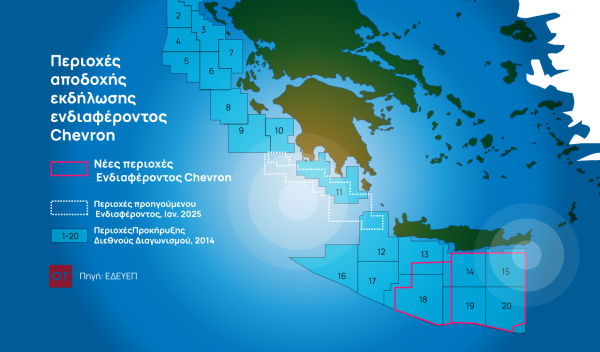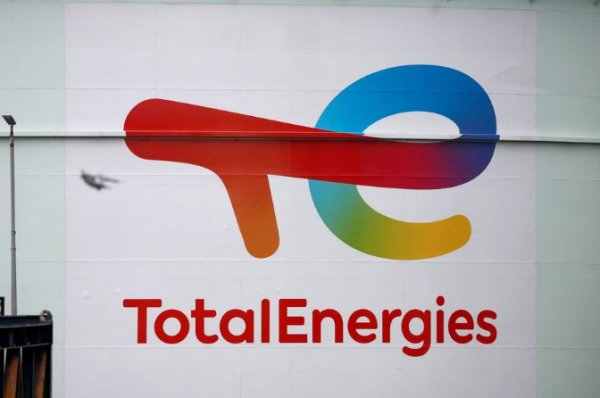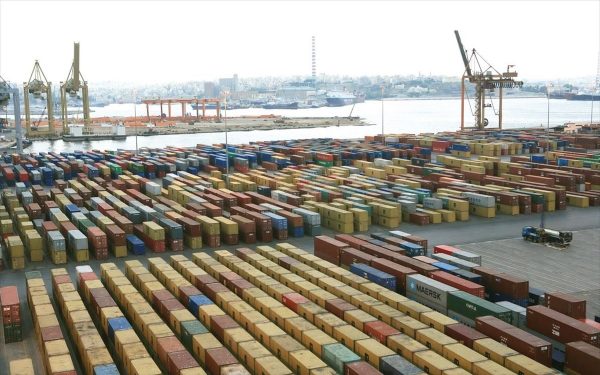
The percentage of Research & Development (R&D) expenditures as part of GDP reached 1.50% in 2020, according to preliminary data published by the National Center for Documentation and Electronic Content (ECB), as the competent National Authority of the Hellenic Statistical System for European Statistics on Research, Development and Innovation.
In 2020, a year marked by the COVID-19 pandemic and its impact on the economy, R&D expenditure in Greece was € 2,473.45 million, an increase of € 135.8 million compared to 2019 ( growth rate 5.8%).
Based on the 5.8% increase in R&D expenditure and the 9.8% decrease in GDP in Greece in 2020, the “R&D Intensity” index, which expresses R&D expenditure as a percentage of GDP, stood at 1.50% from 1.28% in 2019.
The results of the ESF statistical survey, conducted in 2021 on research and development organizations in the four areas of activity: business (BES), higher education (HES), public sector (GOV) and private non-profit institutions (PNP), are available in the publication Key Research and Development Indicators for expenditure and staff in 2020 in Greece – Preliminary data.
Businesses made R&D expenditures of € 1,147.52 million (0.69% of GDP) in 2020, up 6.5% from 2019, and continue to make the largest contribution to the R&D expenditure ratio.
The higher education sector incurred R&D expenditures of 774.39 million euros (0.47% of GDP), showing an increase of 8.1% compared to 2019.
The public sector made R&D expenditures of 537.21 million euros (0.32% of GDP), showing an increase of 2.5% compared to 2019.
The sector of private non-profit institutions has a smaller contribution (14.33 million euros, 0.01% of GDP) and showed a decrease compared to 2019.
Regarding the financing of the R&D expenditures of 2020, the state is the largest source of financing with 1,050.27 million euros (42.5% of the total), through the regular budget (675.55 million euros) of the NSRF 2014 -2020 (240.49 million euros) and other state sources (Regions, national part of the Public Investment Program) (134.23 million euros).
The regular budget increased by 2.2%, from € 660.97 million in 2019 to € 675.55 million in 2020, and funded R&D expenditure in higher education (€ 366.92 million) and government sector (EUR 308.63 million).
The NSRF increased by 18.8%, from € 202.40 million in 2019 to € 240.49 million in 2020, and financed business R&D expenditure (€ 81.66 million) in the higher education sector (81.08 million euros), the public sector (EUR 76.85 million) and the private non-profit sector (EUR 0.90 million).
Other government sources increased by 36.4%, from € 98.42 million in 2019 to € 134.23 million in 2020, and funded R&D expenditure in the higher education sector (€ 70.08 million), government sector (EUR 60.77 million), businesses (EUR 3.18 million), and the private non-profit sector (EUR 0.20 million).
The second largest source of funding for R&D expenditure in 2020 was businesses, with 993.20 million euros (40.2% of the total), an increase of 2.5% compared to 2019. Most, € 924. 47 million was invested in R&D carried out by the companies themselves. The rest funded R&D in the higher education sector (€ 50.08 million), the public sector (€ 17.06 million) and the private non-profit sector (€ 1.59 million).
The European Union is the third largest source of R&D funding, with EUR 275.21 million (11.1% of the total), recording an increase of 5.4% compared to 2019. The EU funded R&D in all sectors, the higher education sector (EUR 126.37 million), businesses (EUR 83.22 million), the public sector (EUR 61.84 million) and the private non-profit sector (EUR 3.78 million) .
The increase in R&D expenditure in 2020 was accompanied by an increase in employment in R&D activities. The number of Full-Time Equivalents (FTEs), which yield full-time “positions”, compared to 2019, increased by 5.8% for total R&D staff and by 7.0% for researchers. The total staff in R&D in 2020 amounts to 57,059 full-time (FTE) positions and researchers to 41,800 FTE. The highest employment in R&D is recorded in the field of higher education.
Research Statistics and Indicators, for Development and Innovation in Greece concern European statistics and are produced by the National Center for Documentation and Electronic Content, the competent national authority of the Greek Statistical System. They are the official national data sent and published by Eurostat and the OECD. They are also available from the ESF in printed and electronic publications and data tables at the website http://metrics.ekt.gr.
The research for the recording of R&D expenses & staff is carried out in the framework of Sub-Project 5 “Production of RIS3 indicators for the years 2016-2023” of the Act “Installation of a Monitoring Mechanism of the implementation of the national strategy RIS3-Collection and processing of indicators”, implemented by the National Center for Documentation and Electronic Content, in the framework of the Operational Program “Competitiveness, Entrepreneurship & Innovation (NSRF 2014-2020)”, with the co-financing of Greece and the European Union-European Regional Development Fund.
Latest News

Airbnb: Greece’s Short-Term Rentals Dip in March Amid Easter Shift
Data from analytics firm AirDNA shows that average occupancy for short-term rentals dropped to 45% in March, down from 49% the same month last year.

Easter Week in Greece: Holy Friday in Orthodoxy Today
At the Vespers service on Friday evening the image of Christ is removed from the Cross and wrapped in a white cloth

Meloni and Trump Meet in Washington, Vow to Strengthen Western Ties
“I am 100% sure there will be no problems reaching a deal on tariffs with the EU—none whatsoever,” Trump stressed.

ECB Cuts Interest Rates by 25 Basis Points in Expected Move
The ECB’s Governing Council opted to lower the deposit facility rate—the benchmark for signaling monetary policy direction—citing an updated assessment of inflation prospects, the dynamics of underlying inflation, and the strength of monetary policy transmission.

Current Account Deficit Fell by €573.2ml Feb. 2025: BoG
The improvement of Greece’s current account was mainly attributed to a more robust balance of goods and, to a lesser extent, an improved primary income account

Hellenic Food Authority Issues Food Safety Tips for Easter
Food safety tips on how to make sure your lamb has been properly inspected and your eggs stay fresh.

Greek Kiwifruit Exports Smash 200,000-Ton Mark, Setting New Record
According to data by the Association of Greek Fruit, Vegetable and Juice Exporters, Incofruit Hellas, between September 1, 2024, and April 17, 2025, kiwifruit exports increased by 14.2%.

Easter Tourism Boom: Greece Sees 18.3% Surge in Hotel Bookings
Among foreign markets, Israel has emerged as the biggest growth driver, with hotel bookings more than doubling—up 178.5% year-on-year.

Greece to Launch Fast-Track Tender for Offshore Hydrocarbon Exploration
Last week, Papastavrou signed the acceptance of interest for the two Cretan blocks, while similar decisions regarding the two Ionian Sea blocks were signed by his predecessor

American-Hellenic Chamber of Commerce to Open Washington D.C. Branch
AmCham's new office aims aims to deepen U.S.-Greece economic ties and promote investment and innovation between the two countries







![Πλημμύρες: Σημειώθηκαν σε επίπεδα ρεκόρ στην Ευρώπη το 2024 [γράφημα]](https://www.ot.gr/wp-content/uploads/2025/04/FLOOD_HUNGRY-90x90.jpg)




![Airbnb: Πτωτικά κινήθηκε η ζήτηση τον Μάρτιο – Τι δείχνουν τα στοιχεία [γράφημα]](https://www.ot.gr/wp-content/uploads/2024/07/airbnb-gba8e58468_1280-1-90x90.jpg)












![ΙΟΒΕ: Πώς το δημογραφικό υπονομεύει την ανάπτυξη – Τι συμβαίνει στις ελληνικές περιφέρειες [γραφήματα]](https://www.ot.gr/wp-content/uploads/2025/04/dimografiko-600x375.jpg)












![Airbnb: Πτωτικά κινήθηκε η ζήτηση τον Μάρτιο – Τι δείχνουν τα στοιχεία [γράφημα]](https://www.ot.gr/wp-content/uploads/2024/07/airbnb-gba8e58468_1280-1-600x500.jpg)


 Αριθμός Πιστοποίησης
Αριθμός Πιστοποίησης